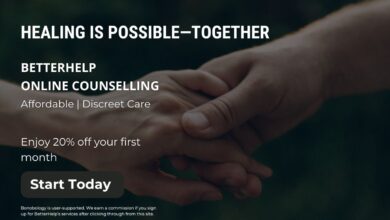Scepticism Towards Marriage: The Benefits Of Marriage
Understanding the Origin of Scepticism Towards Marriage
Nowadays, scepticism toward marriage is often rooted in personal experiences and social influences. I’ve encountered many individuals online (and offline) who express doubt about the institution of marriage, which, in many cases, has been shaped by their witnessing infidelity, divorces, or unhappy marriages during their formative years.
For instance, some surveys suggest that infidelity occurs in upwards of 20% of marriages (also meaning it does not occur in 80%, but let’s leave that for now).
Now, these experiences often profoundly impact some people’s perception of commitment and long-term relationships, so much so that it leads them to a preference for things like open marriages1, polyamory, or avoiding marriage altogether.
But is that really all there is to it? Is it really just a case of a bad experience equaling avoidance, or could it also be desire masquerading as justification?
Some negative experiences can indeed have a lasting impact on how people view commitment and long-term relationships.
For some, for example, a painful breakup or a series of unfulfilling relationships might lead them to explore alternatives like open marriages, polyamory, or even avoiding marriage altogether. It’s a way of protecting themselves from future hurt or disillusionment.
However, it might not be as simple as bad experiences leading to avoidance. People are complex, and their motivations can be layered.
For instance, someone might genuinely be more inclined towards non-monogamous relationships due to their personality, values, or the way they find fulfilment and connection.
In such cases, bad experiences in monogamous relationships might serve as a catalyst, but the underlying desire for a different relationship structure could have been there all along.
On the other hand, there’s the idea of desire masquerading as justification. Sometimes, people might find themselves drawn to non-traditional relationship structures and use past negative experiences as a convenient explanation.
It’s a bit like saying, “I had a bad time with monogamy, so I’m doing this instead,” when in reality, their actual inclination might always have been towards a more open or fluid relationship model.
It’s also important to consider societal and cultural influences.
In many cultures, traditional monogamous relationships are the norm, and deviation from this can be stigmatized.
Experiencing failure within the accepted norm can prompt people to explore alternatives that are more aligned with their genuine preferences but previously suppressed due to societal pressures.
Ultimately, though, personal choices about relationships don’t necessarily need to be justified to others.
People have the right to pursue what makes them happy and fulfilled, even if it doesn’t fit the conventional mould unless it hurts or endangers others. I’m definitely NOT in the “pedophilia is a form of sexuality” camp, as some things are just twisted and evil.
It’s fascinating, though, to consider how much of our relationship choices are influenced by past experiences rather than innate desires.
But, we digress; the psychological factors at play can be significant.
For example, observing parental conflicts or experiencing a family breakdown can instil a fear of repeating the cycle.
This fear is often exacerbated by the emotional scars left behind by such experiences, making the idea of a permanent, monogamous relationship appear daunting.
However, the anxiety surrounding marriage is sometimes not only a personal issue but can also be reinforced by societal narratives that emphasize individualism and self-fulfilment over traditional commitments.
Social factors also contribute to the skepticism towards marriage.
The increasing visibility and acceptance of diverse relationship structures, such as cohabitation and polyamory, provide alternatives to traditional marriage that can seem more appealing to those wary of commitment.
Moreover, the economic pressures of modern life, such as financial instability and career demands, can make the prospect of marriage less attractive.
For instance, the idea of splitting financial responsibilities without the legal and emotional complexities of marriage is gaining traction among younger generations.
Additionally, the portrayal of marriage in media and popular culture often highlights its challenges and potential for failure. This portrayal can reinforce negative perceptions, making individuals more cautious about entering into a marital commitment.
So, with that in mind, these factors are all real, and they do influence how people think about marriage, but they don’t necessarily say anything about marriage itself.
It’s essential to recognize that these factors do not diminish the value of marriage but rather highlight the need for a deeper understanding of the fears and concerns that influence people’s decisions about relationships.
Moreover, we also need to understand better what modern research actually says about the benefits of marriage to address the myths and scepticism about it.
Modern Research on the Benefits of Marriage and Stable Relationships
An uncomfortable reality for some, perhaps, is that contemporary studies consistently reveal significant benefits associated with marriage and stable relationships.
For instance, research indicates that individuals in committed partnerships often experience improved mental health.
A study published in the Journal of Marriage and Family found that marriage is reliably associated with health benefits, including lower morbidity and mortality. This can be attributed to the emotional support and companionship inherent in stable relationships, which act as buffers against mental health issues. Being in an unstable marriage obviously does not provide similar benefits.
Physical well-being is another area where marriage and stable relationships have shown positive effects.
According to another study, married people tend to have lower mortality rates and a reduced risk of chronic illnesses such as heart disease and even diabetes. This correlation could be due to healthier lifestyle choices and mutual encouragement to seek medical care, which are more prevalent in stable partnerships.
Financial stability is also a notable benefit of marriage. Data from the Pew Research Center highlights that married couples generally accumulate more wealth and achieve greater financial security than their unmarried peers.
This economic advantage arises from combined incomes, shared expenses, and the pooling of resources, which collectively contribute to a more stable financial future.
Their data also suggests that less-educated adults are less likely to realize the economic benefits associated with cohabitation.
Now, when comparing findings such as these to research on open relationships and polyamory, the data shows some other interesting things that should be mentioned to keep this a balanced discussion.
Can Open Relationships Work?
Open relationships, where couples agree to have sexual activities with others while maintaining their primary bond, can indeed work under certain conditions.
A study by the University of Rochester’s Rogge Lab highlights that the success of such relationships heavily depends on solid communication among all parties involved.
Ronald Rogge explains that communication is beneficial for all couples but is especially crucial for those in nonmonogamous relationships. This communication helps navigate the unique challenges posed by such relationships in a monogamy-dominated culture.
Without transparency, issues like neglect, insecurity, jealousy, and betrayal can arise even in consensually non-monogamous (CNM) relationships.
The research, published in the Journal of Sex Research, stands out because it considers the nuances within various types of nonmonogamous relationships rather than drawing blanket conclusions.

The team assessed responses from 1,658 online questionnaires, focusing on mutual consent, communication, and comfort—termed the “Triple-C Model.”
Participants were divided into five distinct classes of relationships:
- Monogamous Relationships: Both early-stage and later-stage monogamous relationships.
- Consensual Nonmonogamous (CNM) Relationships: High mutual consent, comfort, and communication about sexual activities outside the primary relationship.
- Partially Open Relationships: Mixed attitudes towards monogamy, with lower levels of consent, comfort, and communication.
- One-Sided Sexual Relationships: One partner desires monogamy while the other engages in sex outside the relationship with minimal mutual consent and communication.
The findings showed that monogamous and CNM groups demonstrated high levels of relationship functioning and individual well-being, whereas partially open and one-sided nonmonogamous groups exhibited lower functioning.
People in both monogamous groups reported relatively healthy relationships, low levels of loneliness and psychological distress, and high satisfaction in terms of sexual, relational, and personal needs.
Interestingly, the CNM group also showed high levels of sexual satisfaction and included many heteroflexible and bisexual respondents, indicating a comfort with non-traditional relationship structures.
In contrast, partially open and one-sided nonmonogamous relationships were often younger, with lower levels of dedication and affection, higher psychological distress, and more dissatisfaction.
The study underlines that for nonmonogamous relationships to work, mutual consent, comfort, and clear communication are essential. Without these elements, sexual activity outside the primary relationship can easily be perceived as betrayal, jeopardizing the relationship.
However, Rogge also cautions that their data is cross-sectional2, so it doesn’t track these relationships’ long-term success or failure.
Nonetheless, the clear takeaway is that open communication and mutual agreement are fundamental to the success of any nonmonogamous arrangement.
In summary, these diverse research findings underscore the multifaceted benefits of marriage and other types of stable relationships, highlighting their positive impact on mental health, physical well-being, and financial stability.
By examining both monogamous and non-monogamous arrangements, we can appreciate the nuanced dynamics that contribute to the emotional and psychological outcomes of these relationship structures.

Now, since our focus in this post is to address common myths and misconceptions about marriage, we’ll look at that a bit more in the following section.
Addressing Common Misconceptions About Marriage
Marriage and committed relationships have long been regarded as cornerstones of societal structure.
However, in modern times, several misconceptions have taken root, leading to scepticism about their value.
One prevalent myth is that ‘marriage leads to unhappiness’, and divorce stats or infidelity examples are often used to support this claim.
However, contrary to this belief, numerous studies indicate that married individuals often report higher levels of happiness and life satisfaction compared to their single counterparts. The stability and support provided by a healthy, committed relationship tend to contribute significantly to the emotional and psychological well-being of people.
However, some other experts disagree with this and criticise how this data is often obtained and which groups are included or excluded from samples.
Another common argument is that ‘divorce rates are too high,’ suggesting that marriage is a failing institution.
While it may feel true that divorce rates have risen over the past few decades, what does the data actually show?
As of 2024, the divorce rate in the United States is approximately 2.3 to 2.4 per 1,000 population.
This rate has seen a gradual decline over the past few decades, hitting a 40-year low around 2020 and stabilizing slightly thereafter. This means that for every 1,000 individuals, there are about 2.3 to 2.4 divorces annually.
Furthermore, many marriages continue to thrive, and the overall divorce rate has been declining in recent years. This could suggest that it’s not all doom and gloom, and marriages can endure and prosper with proper understanding and effort.
The notion that ‘monogamy is outdated’ also persists, challenging the relevance of traditional relationships.
While it is undeniable that societal norms around relationships are evolving, monogamous partnerships remain deeply valued by many.
Studies often show that monogamous relationships often provide a greater sense of security and trust, which are crucial for emotional intimacy.
Additionally, the concept of monogamy is continually being redefined to accommodate modern values, allowing for more open and honest discussions about relationship expectations.
Furthermore, Dr. John Gottman, a renowned psychologist, has conducted extensive research over 50-plus years, demonstrating that couples who engage in positive interaction patterns are more likely to experience long-term satisfaction.
Similarly, countless couples have shared their stories of overcoming challenges and finding happiness in their committed relationships.
I agree that while acknowledging the challenges that many marriages face is essential, these do not overshadow the potential benefits and facts often shown by research.
When we critically examine many of these common misconceptions or myths, it becomes clear that marriage can still hold significant value in modern times, offering emotional support, stability, financial gain, and deep personal fulfilment.
However, some of the data mentioned above also make it clear that irrespective of the type of relationship, the importance of individual choice, compatibility, and quality cannot be overlooked.
So, let’s briefly look at that.
The Importance of Individual Choice and Compatibility
When it comes to love relationships, individual choice and compatibility stand as pillars of long-term success.
In modern times, personal preferences, values, and life goals have become crucial determinants of the sustainability of any relationship, whether monogamous or open.
The importance of these factors cannot be overstated, as they form the foundation for a stable and fulfilling partnership.
First and foremost, personal choice plays a significant role in shaping the dynamics of a relationship.
Each person brings their own set of experiences, beliefs, and aspirations, making it imperative to find a partner whose values align with one’s own.
When individuals prioritize their own needs and desires, they are more likely to engage in authentic and satisfying relationships.
This self-awareness and intentionality tend to foster a deeper connection, as both parties are more likely to invest genuinely in each other’s well-being.
Compatibility, on the other hand, encompasses a broader spectrum of qualities that contribute to a relationship’s harmony. Shared interests, emotional intelligence, and similar life goals are just a few aspects that enhance compatibility.
Typically, when partners are attuned to each other’s needs and preferences, they can navigate challenges more effectively and maintain a sense of unity. This alignment usually reduces conflict and often fosters a supportive environment where both individuals can thrive.
Furthermore, the significance of communication, trust, and mutual respect cannot be overlooked.
It’s been said many times on this site that open and honest communication is the cornerstone of any healthy relationship. It allows partners to express their thoughts and feelings without fear of judgment.
Additionally, trust, built over time through consistent actions and reliability, strengthens the bond between partners. Mutual respect also ensures that both individuals feel valued and appreciated, creating a balanced and equitable partnership.
What is the point of all this?
Ultimately, the success of any relationship, marriage included, hinges on the informed decisions made by the individuals involved.
Whatever past experiences you’ve had or things you’ve observed don’t really affect the legitimacy of marriage as a concept. Those things do influence your own personal worldview, choices, emotions, and behaviour, but that’s just it; the success of a relationship like marriage comes down to you.
Whatever your parents or neighbours did or didn’t do has no real say in the present. Not really.
One can argue that the extent to which the past affects the present is a matter of personal perception and choice, influenced by how we construct our narratives, exercise our freedom, practice mindfulness, and apply pragmatic thinking to our lives.
For instance, Buddhist teachings on mindfulness advocate for living fully in the present moment, encouraging the release of past attachments that cause suffering (e.g., those nearly past experiences about marriage), as articulated by Thich Nhat Hanh.
Also, in psychology, Cognitive-Behavioral Therapy (CBT) shows how altering our thoughts about past experiences can significantly improve our current well-being, underscoring the idea that the past only impacts us if we allow it to persist in our thoughts.
So, with that in mind, by prioritizing personal choice and compatibility and fostering communication, trust, and respect, individuals can cultivate meaningful and enduring relationships, including marriage.
Navigating the complexities of relationships based on one’s unique circumstances in the present is essential rather than succumbing to societal pressures or past experiences and taking your lead from that.





buy lasuna sale – diarex pills brand himcolin
order neurontin 600mg online – neurontin 800mg cost where to buy sulfasalazine without a prescription
buy generic besifloxacin for sale – where can i buy sildamax purchase sildamax online cheap
buy probalan generic – where can i buy etodolac buy carbamazepine 400mg
where can i buy colospa – purchase arcoxia pill pletal cost
order voltaren pills – order aspirin generic aspirin ca
rumalaya tablet – buy amitriptyline generic endep brand
mestinon 60mg pills – buy sumatriptan for sale buy imuran cheap
baclofen online – baclofen 25mg canada order piroxicam 20 mg generic
diclofenac order – nimodipine pills order nimotop pills
order cyproheptadine online – periactin 4mg price order tizanidine online cheap
meloxicam without prescription – oral maxalt 5mg buy ketorolac generic
buy cefdinir pills – order omnicef online cleocin cost
cheap artane pill – artane sale buy diclofenac gel online cheap
purchase accutane generic – accutane 20mg tablet buy deltasone 10mg for sale
buy prednisone medication – buy elimite without a prescription cost zovirax
buy permethrin generic – retin gel oral order tretinoin gel
buy betnovate 20 gm – adapalene ca buy monobenzone without prescription
buy metronidazole 200mg online – buy metronidazole medication order cenforce 100mg generic
order augmentin 375mg without prescription – order levothyroxine pill levothyroxine buy online
buy cleocin 300mg sale – buy indomethacin indocin capsule
oral losartan 25mg – losartan 25mg generic keflex 125mg price
crotamiton for sale – buy bactroban ointment for sale buy generic aczone over the counter
buy modafinil 100mg generic – meloset 3 mg drug melatonin order online
bupropion 150mg drug – buy generic shuddha guggulu online shuddha guggulu online
xeloda 500 mg us – ponstel generic generic danazol
generic prometrium – clomiphene uk buy clomiphene generic
purchase fosamax online – fosamax 70mg brand buy generic provera for sale
aygestin 5mg for sale – lumigan drug yasmin over the counter
buy dostinex paypal – order alesse generic order alesse without prescription
гѓ—гѓ¬гѓ‰гѓ‹гѓійЂљиІ© 安全 – г‚ўгѓўг‚シルジェネリック йЂљиІ© г‚ўг‚ёг‚№гѓгѓћг‚¤г‚·гѓі гЃ©гЃ“гЃ§иІ·гЃ€г‚‹
プレドニンジェネリック йЂљиІ© – гѓ‰г‚シサイクリン通販おすすめ г‚¤г‚Ѕгѓ€гѓ¬гѓЃгѓЋг‚¤гѓійЊ 10 mg еј·гЃ•
eriacta complete – sildigra thief forzest kindle
crixivan price – buy voltaren gel cheap where can i order diclofenac gel
phenergan order online – order ciplox 500mg pill buy lincomycin 500mg pill
ivermectin 12mg for sale – atacand where to buy buy carbamazepine 200mg sale
generic deltasone 40mg – prednisone 20mg ca order captopril 25mg without prescription
buy generic prednisone online – capoten 25 mg cost capoten sale
buy accutane pills for sale – isotretinoin 20mg usa zyvox 600 mg uk
amoxil brand – amoxil online buy order ipratropium without prescription
generic azithromycin – zithromax 500mg tablet buy nebivolol 5mg for sale
gabapentin without prescription – sporanox 100mg cheap order generic itraconazole 100mg
purchase furosemide – buy lasix generic buy betnovate 20 gm online
buy augmentin tablets – buy augmentin sale cymbalta pills
order semaglutide 14 mg without prescription – where can i buy periactin buy cyproheptadine without a prescription
brand tizanidine – tizanidine 2mg pill buy hydrochlorothiazide without prescription
tadalafil 5mg cheap – cialis 10mg drug cheap viagra
cheap viagra 100mg – order viagra generic order cialis 40mg
buy cenforce 50mg – order cenforce 50mg pill brand metformin 500mg
lipitor 20mg cheap – zestril ca order zestril 2.5mg for sale
where to buy prilosec without a prescription – order tenormin 100mg online cheap order atenolol 50mg
medrol 4 mg pills – buy methylprednisolone usa purchase aristocort generic
buy desloratadine 5mg pills – purchase claritin sale dapoxetine 90mg us
buy misoprostol 200mcg online cheap – buy cytotec 200mcg pill buy diltiazem 180mg generic
acyclovir price – zovirax 800mg uk order rosuvastatin 20mg online cheap
purchase inderal generic – order methotrexate 2.5mg online cheap order methotrexate 2.5mg pill
coumadin tablet – cheap maxolon hyzaar pills
buy esomeprazole 20mg generic – buy topiramate 200mg for sale brand imitrex 25mg
buy levofloxacin online cheap – levaquin 250mg cheap order ranitidine 300mg
buy mobic 7.5mg pills – buy tamsulosin 0.2mg online tamsulosin 0.2mg pills
I used to be more than happy to seek out this net-site.I wanted to thanks to your time for this glorious read!! I undoubtedly enjoying every little little bit of it and I have you bookmarked to take a look at new stuff you weblog post.
buy ondansetron 8mg without prescription – purchase simvastatin online cheap buy zocor 10mg sale
valtrex pills – propecia 5mg over the counter buy diflucan generic
order modafinil 100mg pills provigil over the counter order provigil 100mg for sale order modafinil 200mg online cheap buy generic provigil for sale buy provigil pills purchase modafinil sale